Week7
-> 2023 15 Nov.
Design for Animation, narrative structure, and film language
Activity
Pick a film you personally have watched and enjoyed.
Cinderella
https://www.youtube.com/watch?v=LbPzvqYxB_A
-Breakdown the story arc (what are the 8 stages)

The tale initiates with her discontent as a maid to her cruel stepmother and stepsisters.
Upon the king’s announcement of a ball, Cinderella, with the assistance of her fairy godmother, gains the opportunity to attend. This marks the ascent to joy as she dances with the prince, yet the enchantment dissipates at midnight. Returning to her dismal life, she inadvertently leaves a shoe behind.
Following the climax of elation, there is a descent into despair as the prince searches for the shoe’s owner. The search leads to Cinderella’s house, confirming her as the shoe’s owner. The prince and Cinderella reunite, concluding the narrative with a return to happiness.
–
-Breakdown the characters into their archetypes
Main character _ Cinderella
Caregiver:
Cinderella assumes the role of a caregiver by taking care of her animal friends. She feeds, clothes, shelters, and rescues them from traps and the evil cat, Lucifer.
Protagonist:
As the main character, Cinderella serves as the protagonist. Her commitment to doing the right thing and making positive choices aligns with the typical attributes of a good and positive character.
Hero _ princess
Prince Charming earns the hero designation through the successful completion of a quest—his pursuit of Cinderella after her departure from the castle at midnight. The goal of his quest is to find Cinderella, and the trial he undergoes is the fitting of the shoe on every woman’s foot in the kingdom.
Mentor _ Fairy
The Fairy Godmother is Cinderella’s mentor. She helps her out when she needs help the most, and she encourages her. She’s an older woman who is very wise, and Cinderella can learn a lot of life lessons from her.
Villain _ Lady Tremaine
The main antagonist in the story, the Stepmother, harbors life goals centered around acquiring fame and wealth, which in themselves aren’t inherently negative. However, her methods to achieve these goals involve mistreating Cinderella, treating her like a servant, and attempting to sabotage her opportunity to marry the prince. The Stepmother poses a continuous threat to Cinderella by acting malevolently and trying to obstruct her chance at love. Her character is distinctly negative, displaying evil tendencies towards others, even her own daughters.
Helper _ Mice
The mice play a crucial role as Cinderella’s helpers, assisting her in various tasks. They contribute by aiding in cleaning, crafting a dress for the ball, and providing her with the key to escape the attic promptly.
–
-Create a timeline for the main character starting before the film starts.
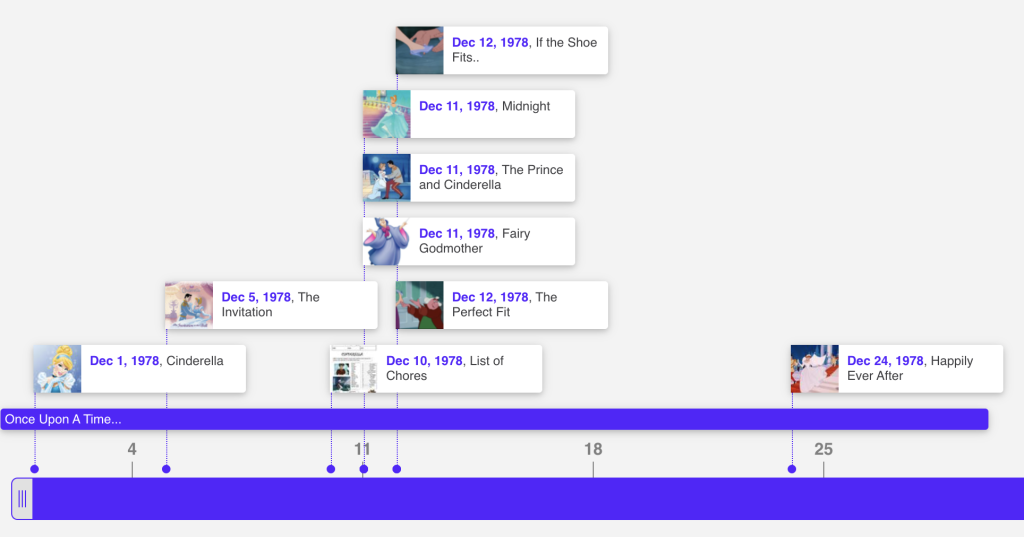
Cinderella was released in 1950 and is based on the fairy tale of the same name by Charles Perrault. Cinderella is set in France, and based on the style of the clothes, many have concluded that it takes place in the mid-to-late 1800s, as the characters don’t offer any clear clues as to when the story is set.
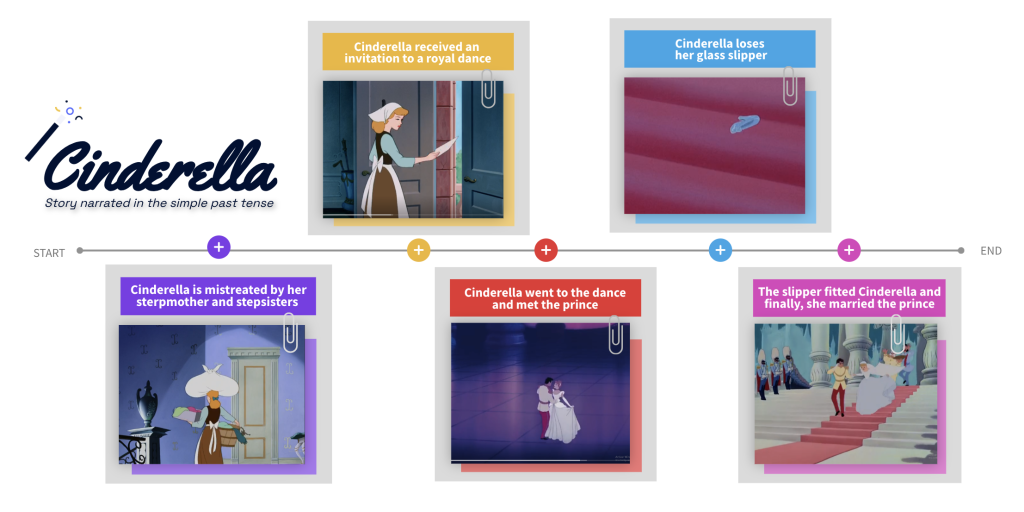
Plot Synopsis:
- Unfair Treatment
Cinderella, mistreated by her stepsisters, encounters magical intervention from her fairy godmother.
2. Enchanting Ball
Transformed into a stunning princess, she attends a ball and forms a connection with a prince.
3. Slipper Left Behind
Returning the next day, she inadvertently leaves her slipper, prompting the prince’s kingdom-wide search.
4. Royal Reunion
Through the slipper, the prince locates Cinderella, leading to their eventual reunion.

Hero arc – 8 stages
In this video, every Story is the Same, scholars have dissected the hero’s journey as an ill Cinderella was released in 1950 and is based on the fairy tale of the same name by Charles Perrault. Cinderella is set in France, and based on the style of the clothes, many have concluded that it takes place in the mid-to-late 1800s, as the characters don’t offer any clear clues as to when the story is set.
Kurt Vonnegut’s insights on the 8 “shapes” of stories provide a unique perspective on narrative structures. Vonnegut identified common story arcs and shapes, such as “Man in Hole,” “Cinderella,” and “Tragedy,” to highlight recurring patterns in storytelling. Learning from Vonnegut can help writers and storytellers understand the fundamental structures that resonate with audiences, providing a framework for crafting compelling narratives.
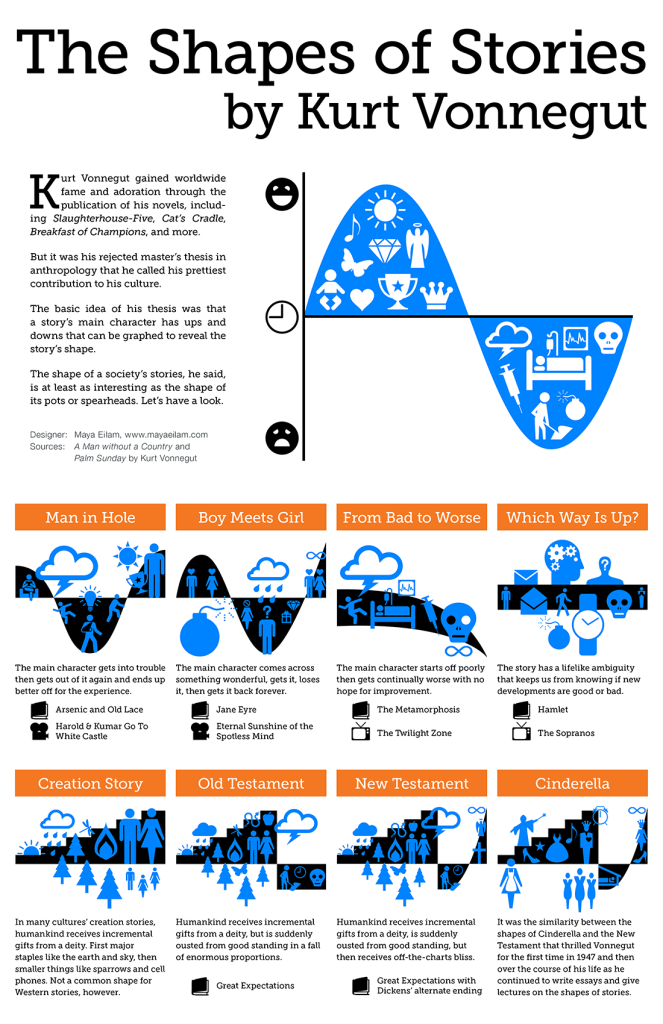
In life, things go up and down, just like in movies and stories we enjoy. Even in the routine of daily tasks, such as grocery shopping and watching YouTube, it’s important to appreciate the interesting twists and turns.
Man in Hole ( Examples: The Godfather, Harold and Kumar. )
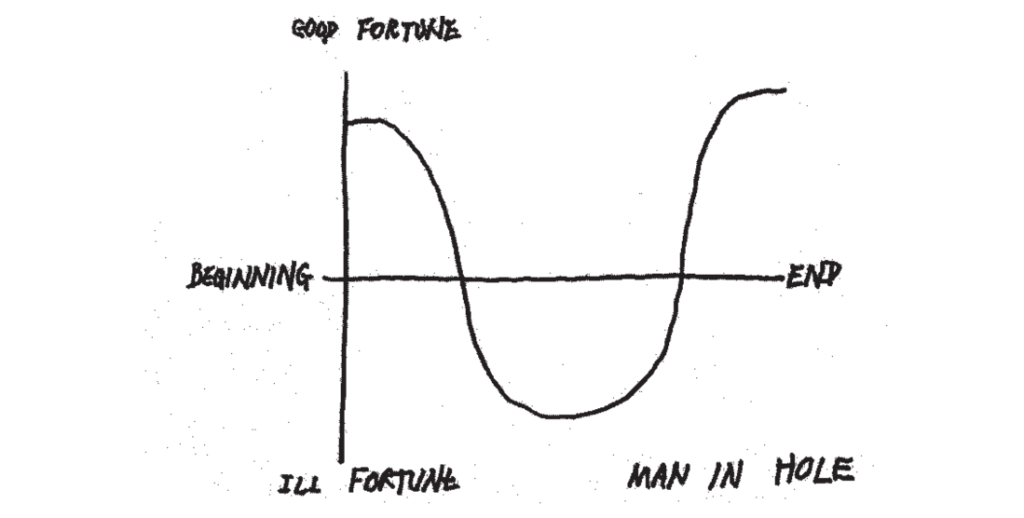
The ‘man in hole’ narrative reflects the universal desire for personal growth by overcoming challenges and emerging stronger.
The conclusion holds the power to either enhance or diminish a story. It plays a critical role in story development, aiming to leave a lasting impression that prompts viewers to revisit the narrative or recommend it to others, thereby expanding the audience.
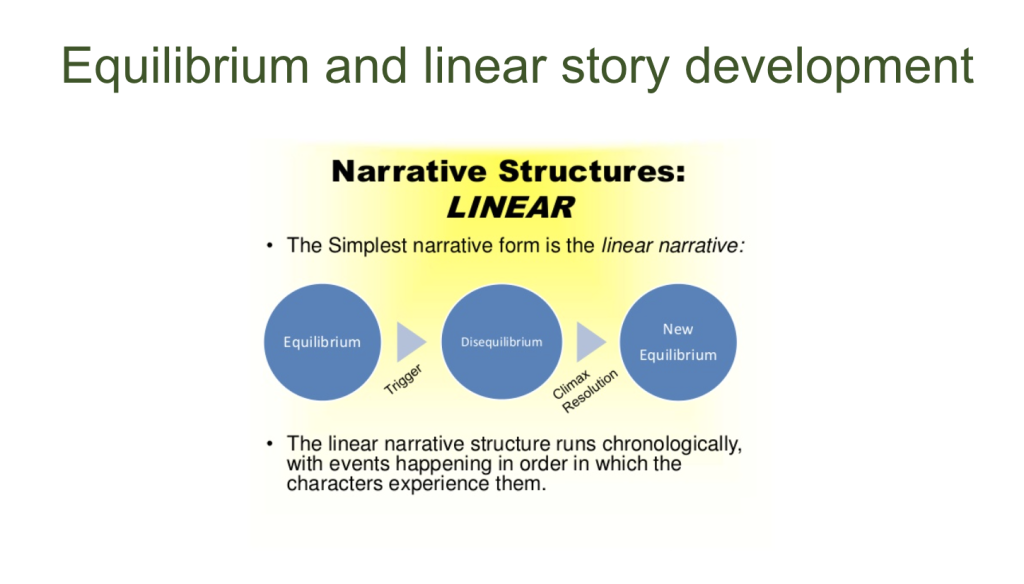
Three-Part Story
Aristotle believed that every piece of poetry or drama must have a beginning, middle, and end.
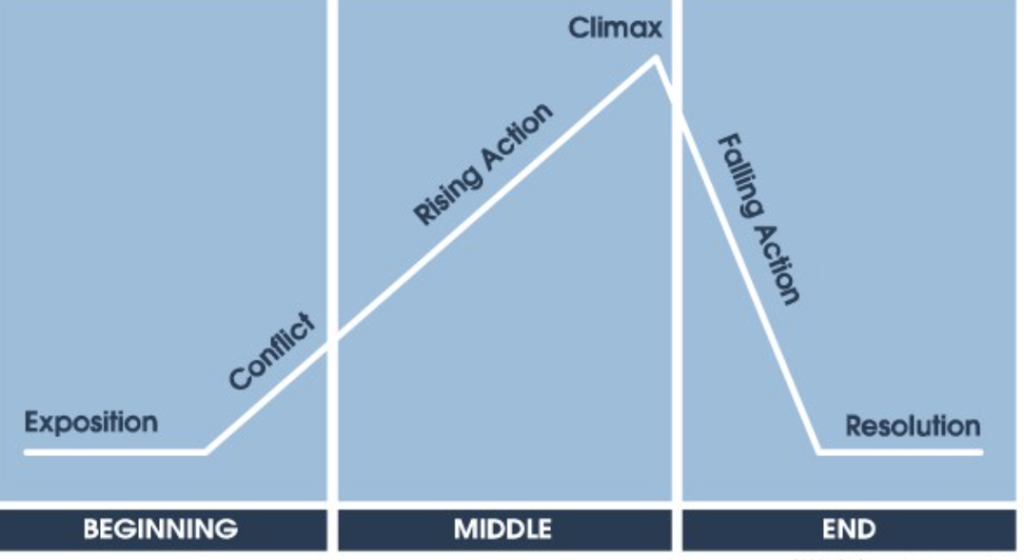
Equilibrium and re-Equilibrium
Strategies for conception and development of the story, focussing on narrative resolution building events, and engaging the audience. A successful narrative must competently handle a medium to present a chain of events that engage an audience and satisfactorily conclude.
Over 5 acts:
- Equilibrium/Prologue
- Disruption/Catalyst
- Recognition/Resolve
- Take Action/Quest
- Resolution/Re-Equilibrium
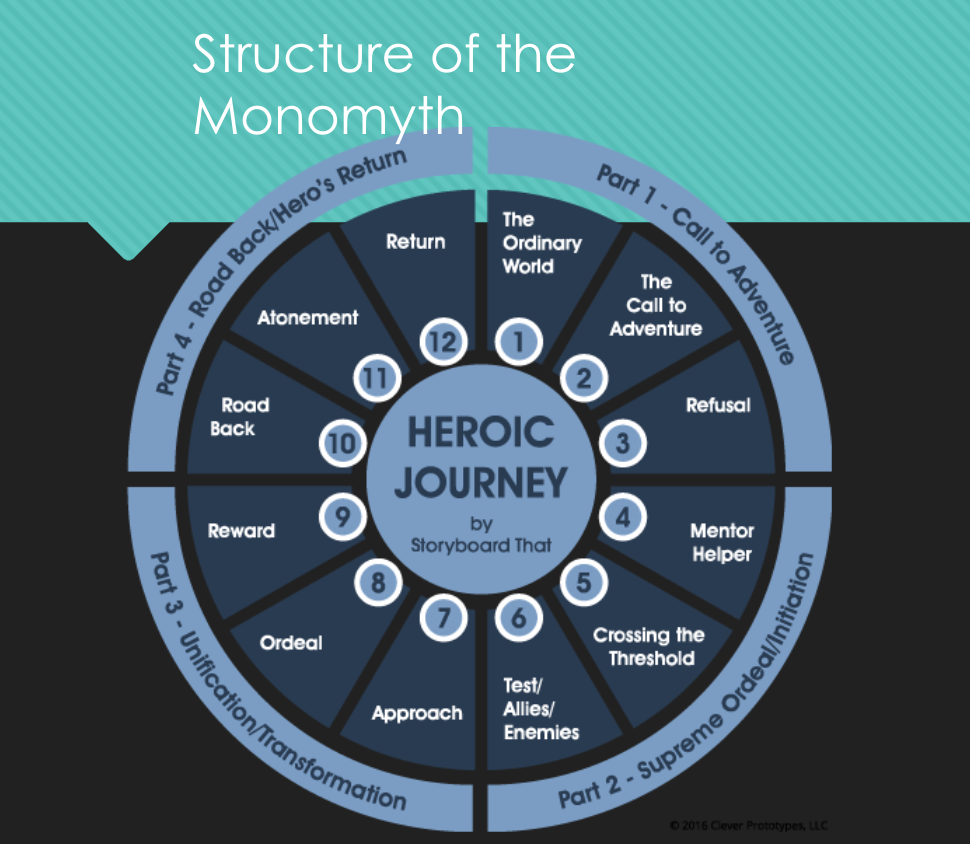

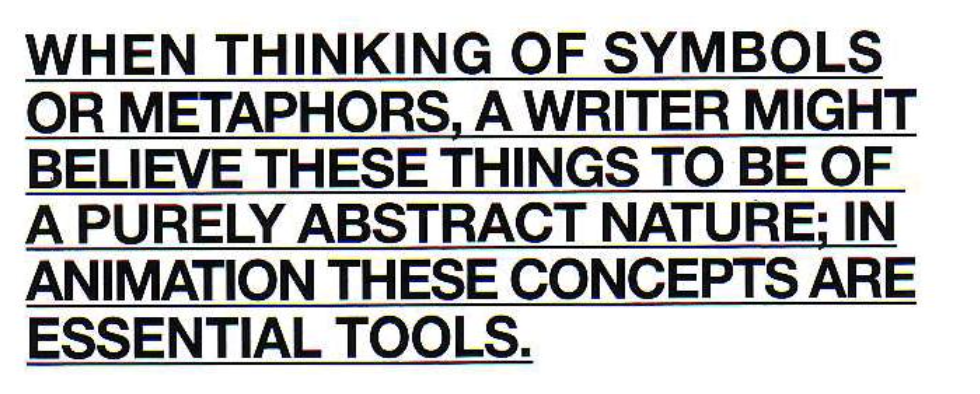
In class, we learned what is hero theory in film and it is very interesting for building up a story. It is surprising to know that almost all stories have the same structure with ups and downs. I know there are some movies that might have an opening ending that may not included in this theory. But, overall, with the help of a story curve, it is a good skill to build a storyboard and observe movies as a reference.
All scenes must be clearly read in frames.

W
The Language Of Animation: Editing
Editing serves as the primary mechanism for stringing together shots and scenes to form a cohesive film. While in live-action films, this process typically occurs after the film is shot, in narrative animation, editors collaborate closely with the director and story supervisor once storyboards are seemingly finalized. The art of editing plays a crucial role in shaping the final narrative and visual flow of the animated story.
The Purpose of Editing
- To place one shot next to another
- To create a narrative progression
- To end a scene and begin another
- To provide additional detail (e.g. cut to a close-up)
- To indicate narrative effect (e.g. cut to a reaction shot)
- To provide the best possible view of action for the viewer at all times
- The moment of the edit is called the ‘shot transition’
3 Golden Rules
- Editing ought to stay imperceptible, with only the impact being felt – the ideal cut is the one that goes unnoticed. -> check timing
- The storyteller must always stay ahead of the audience – less is more.
- The audience should actively engage, not merely observe. -> Predict what’s gonna happen. And, the audience is participating. We need to be involved in stories.
Editing in cinema possesses a rich history with well-established traditions that evolved alongside the development of film as a communicative medium. The fundamental choice between continuity and discontinuity editing shapes the narrative approach, with the latter encompassing various alternatives, such as montage editing.
Long takes
It can be used in slow camera panning such as a single shot with no cut and no edit movie.
Film editing has a rich history, evolving alongside the development of cinema as a communication medium. The choice between continuity and discontinuity editing shapes narrative approaches, with the latter, including montage editing, offering diverse alternatives.
Montage Editing
Montage Editing: brings individual shots together to generate a shock, strange juxtaposition, or a new idea.
Montage is the most common skill in movies especially when the plots are getting intense and used in close-up shots.
Continuity Editing
A story takes priority over the mechanics of storytelling.
Standard editing creates a seamless flow, emphasizing the story over the mechanics. Most cuts go unnoticed, directing attention to the characters and the narrative.
Shot Transitions
2 people in parallel of potential killers ( screen direction ) getting something right happening. Camera directions are the same cut.
There is another transition, from left to right which we can see in Star Wars. Also, a clock-wipe transition in Star Wars is a very usual way now.
Continuity
Continuity can be achieved between shots in four main ways:
- Graphic relations between shots
- Rhythmic relations between shots
- Spatial relations between shots
- Temporal relations between shots.
Disney Hyperrealism
Animation as a medium foregrounds its artifice
Snow White’s way of drawing has a special name: hyperrealism. Paul Wells, an expert, says hyperrealism in animation tries to look real, even though animation is usually make-believe. It’s like using hyperrealism as a ruler to see how real other animations are.
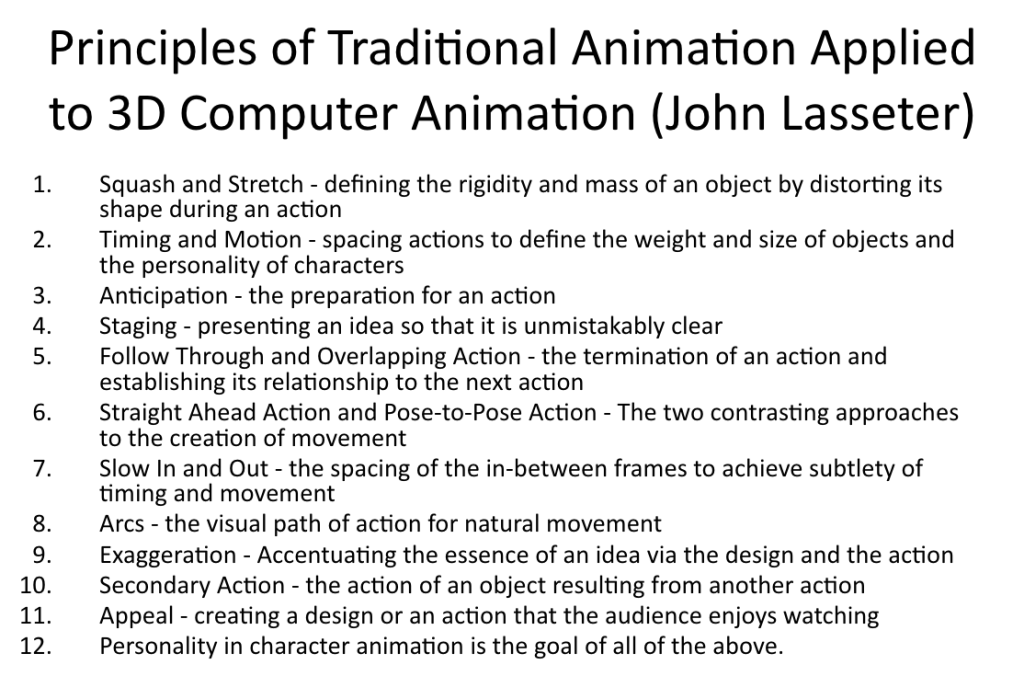
Cohn, N. (2012) Visual Narrative Structure, Cognitive Science, a Multi-disciplinary Journal. https://doi.org/10.1111/cogs.12016Ci
